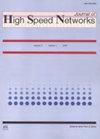基于分片和聚合签名的新公共区块链协议
IF 1
Q4 COMPUTER SCIENCE, INFORMATION SYSTEMS
引用次数: 1
摘要
现有的区块链,特别是公共区块链,面临着可扩展性的挑战,这意味着处理能力不会随着节点的增加而变得更好,这使得它在移动计算应用中不太可行。已知一些改进的技术可以通过缩小共识组、增加区块容量和/或缩短区块间隔来加快处理能力。即使这些解决方案也面临着存储限制和安全性弱等主要问题。针对区块链技术在移动领域的实际应用场景,我们提出了一种基于分片、聚合签名和加密排序的新型公有区块链,我们称之为SAC。在SAC中,交易速率随着分片数量的增加而增加,而共识签名的长度是恒定的。同时,在SAC中,共识代表的分配由可验证的随机函数控制,可以有效地解决集中共识问题。此外,本文还对SAC的性能进行了分析,与其他分片技术进行了充分的比较,同时也进行了合理的安全性分析。我们的实验结果清楚地显示了这种新型区块链协议在移动计算中的潜在适用性。本文章由计算机程序翻译,如有差异,请以英文原文为准。
New public blockchain protocol based on sharding and aggregate signatures
Existing blockchains, especially public blockchains, face the challenges of scalability which means the processing capacity will not get better with the addition of nodes, making it somewhat infeasible for mobile computing applications. Some improved technologies are known to speed up processing capacity by shrinking the consensus group, increasing the block capacity and/or shortening the block interval. Even these solutions are met with major problems such as storage limitations and weak security. To face the realistic application scenarios for blockchain technology in the mobile realm, we propose a new public blockchain designed based on sharding, aggregate signature and cryptographic sortition which we call SAC. In SAC, the transaction rate increases with the number of shards while the length of the consensus signature is a constant. Meanwhile, in SAC, the assignment of consensus representatives is controlled by a verifiable random function, which can effectively solve the problem of centralized consensus. In addition, this paper analyzes the performance of SAC to give adequate comparison with other sharding technologies while also giving a rational security analysis. Our experimental results clearly show the potential applicability of this novel blockchain protocol to in mobile computation.
求助全文
通过发布文献求助,成功后即可免费获取论文全文。
去求助
来源期刊

Journal of High Speed Networks
Computer Science-Computer Networks and Communications
CiteScore
1.80
自引率
11.10%
发文量
26
期刊介绍:
The Journal of High Speed Networks is an international archival journal, active since 1992, providing a publication vehicle for covering a large number of topics of interest in the high performance networking and communication area. Its audience includes researchers, managers as well as network designers and operators. The main goal will be to provide timely dissemination of information and scientific knowledge.
The journal will publish contributed papers on novel research, survey and position papers on topics of current interest, technical notes, and short communications to report progress on long-term projects. Submissions to the Journal will be refereed consistently with the review process of leading technical journals, based on originality, significance, quality, and clarity.
The journal will publish papers on a number of topics ranging from design to practical experiences with operational high performance/speed networks.
 求助内容:
求助内容: 应助结果提醒方式:
应助结果提醒方式:


